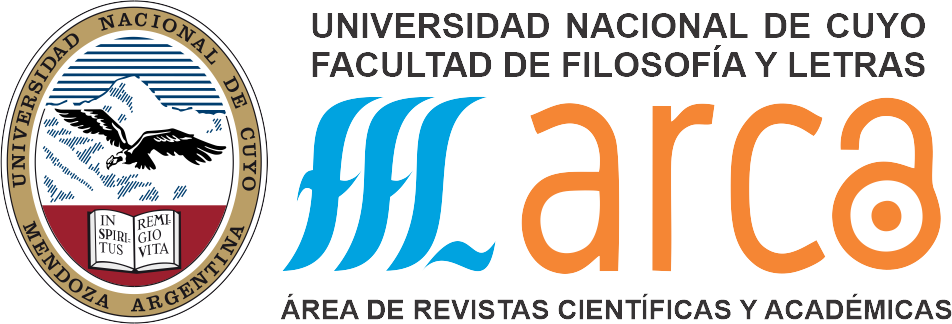Walkability: The sustainable and inclusive city rigth
DOI:
https://doi.org/10.48162/rev.55.004Keywords:
sustainable urbanism, social inclusion, indicatorsAbstract
This work is part of a research project developed by multidisciplinary researchers, within a line of research about sustainable urban development. That concept considers social equity, economic efficiency and the preservation of the urban environment as axes of development.
The present work proposes an approach to the study of walkability as a tool to understand the city from the perspective the social inclusion in the general context of the Right to the City concept. The empirical anchoring is made with San Juan city, Argentina.
Walkability is the word used to evaluate how friendly an urban area is to walk for all pedestrians. Especially for those who have difficulty getting around due to various reasons related to their physical condition, gender or age.
Methodologically the work is ordered into three operational stages: The first part is the review and analysis of antecedents relating to the subject. The second part is oriented to make a survey of study area situation, and finally, indicators are proposed to assess the walkability conditions of some areas selected for this purpose in San Juan city.
References
AGENCIA DE ECOLOGÍA URBANA DE BARCELONA (2011). Sistema de Indicadores y Condicionantes para ciudades Grandes y Medianas. Documento PDF. Ministerio de Medio Ambiente y Medio Rural y Marino. Barcelona, España.
ÁLVAREZ DE CELIS, F.; ÁLVAREZ INSÚA J.; EGUÍA S.; PERSICO M. E.; BELACIN S.; TRÍPOLI F. (2014). Índice sintético de caminabilidad. Metodología. PDF. Ministerio de Desarrollo Urbano. Gobierno de la Ciudad de Buenos Aires.
CARRIÓN, F. DAMMERT-GUARDIA, M. (2019) Derecho a la ciudad: una evocación de las transformaciones urbanas en América Latina / 1a ed. - Lima: CLACSO, Flacso - http://biblioteca.clacso.edu.ar/clacso/gt/20200519104921/Derecho-a-la-ciudad.pdf. Ecuador, IFEA, ISBN 978-612-4358-05-0.
COALICIÓN INTERNACIONAL PARA EL DERECHO A LA CIUDAD (2004) “Carta Mundial por el Derecho a la Ciudad”. Disponible en: file:///C:/Users/PERSONAL/Downloads/HIC-Document-5785-20181217-2134.pdf
CORRALIZA RODRÍGUEZ, J.A.; BERENGUER, S.; MARTÍN, R. (2006). "Medio ambiente, bienestar humano y responsabilidad ecológica". Edit. Resma. Madrid, España. ISBN 978-84-935532-0-3
FALÚ, A. M. (2014). "El derecho de las mujeres a la ciudad. Espacios públicos sin discriminaciones y violencias". Revista Vivienda y Ciudad - ISSN 2422-670X -Vol. 1.
FOLCH R. Y BRU J. (2017) "Ambiente, territorio y paisaje. Valores y valoraciones". Editorial Barcino. Barcelona/Madrid. ISBN: 978-84-7226-819-7
GARCÍA DELGADO D. (2020). Ciudad y pandemia: las metrópolis en cuestión. https://www.flacso.org.ar/noticias/ciudad-y-pandemia-las-metropolis-en-cuestion/
GEHL, J. (2014) Cities for people. ISBN 978-987-9393-80-2. ONU-Hábitat. Ed.Infinito
GIUR-FAUD-UNSJ (2014-2015). Estudio de Indicadores de Sustentabilidad Urbana. Aplicación en áreas críticas de la ciudad de San Juan. Proyecto de Investigación. Dirección: Nacif N.
GUTIÉRREZ, D. (2009). La Construcción de Indicadores como Problema Epistemológico Cinta Moebio 34:16-36 www.moebio.uchile.cl/34/gutierrez.html
GUTIÉRREZ LÓPEZ, CABALLERO PÉREZ, ESCAMILLA TRIANA, (2019). Índice de caminabilidad para la ciudad de Bogotá. Revista de Arquitectura (Bogotá), 21(I), 8-20. doi: http://dx.doi.org/10.14718/RevArq.2019.21.1.1884
JACOBS, JANE (1961). “The Death and Life of Great American Cities”. Citado en "Indice sintético de caminabilidad" 2011, Gobierno de CABA. Buenos Aires
LEVA, GERMÁN (2005). Indicadores de calidad de vida urbana. PDF. UNQuilmes- Hábitat/Metrópolis
LITMAN, TODD (2011) “Developing Indicators For Comprehensive And Sustainable Transport Planning”. https://www.vtpi.org/sus_tran_ind.pdf
LLOP, JOSEP Mª. (2013). Medir la sostenibilidad urbana a escalas intermedias: Compacidad-proximidad y habitabilidad-accesibilidad. Revista Catalana de Acceso Abierto: http://www.raco.cat/index.php/Sostenible/article/view/261968
NACIF N., ESPINOSA M, MARTINET M (2012). Indicadores para evaluación de la sustentabilidad en la ciudad de San Juan, Argentina. Revista ANDINAS, Revista de Estudios Culturales en torno a la Arquitectura, el Urbanismo y el Diseño. Volumen: 01-2012, Página: 56 a 63 – Publicación con Referato - Código ISSN: 2250-4931
NACIF N., ESPINOSA M, MARTINET M (2011). Una ciudad oasis de zona sísmica. Revista Iberoamericana de Urbanismo (RIURB). 1 Setembre 2011, núm. 6, p. 73-80. URIhttp://hdl.handle.net/2099/12525. ISSN2013-6242
NACIF N. (2017) "Diseño de indicadores urbanos de sustentabilidad. El caso del Gran San Juan en Argentina". Revista Urbano Nº 34. Pág.6 - 15. ISSN 0717 - 3997 / 0718-3607. Universidad Bio-Bio, Chile.
NUÑEZ, ANA (2016): Del Derecho a la Ciudad, al Derecho al Espacio Diferencial. Revista de Direito da Cidade, vol.06, nº01. ISSN 2317-7721 p.90-110. Brasil
ONU-HÁBITAT (2016) “Nueva Agenda Urbana”. Disponible en: https://onuhabitat.org.mx/index.php/la-nueva-agenda-urbana-en-espanol.
ONU-HÁBITAT (2021) "Los usos mixtos del suelo y sus beneficios". https://onuhabitat.org.mx/index.php/los-usos-mixtos-del-suelo-y-sus-beneficios
ROITMAN, DORA y otros. San Juan, La ciudad y el Oasis. Editorial EFU - San Juan, Argentina. 1996.
RUEDA PALENZUELA, S. (1999). Modelos e Indicadores para ciudades más sostenibles. PDF. Taller sobre Indicadores de Huella y Calidad Ambiental Urbana. Generalitat de Catalunya.
SÁNCHEZ DE MADARIAGA, INÉS (2008). Urbanismo con perspectiva de género. Ed. Instituto Andaluz de la mujer. ISBN: 847921-101-6. https://www.juntadeandalucia.es/institutodelamujer/ugen/sites/default/files/documentos/98.pdf
UN-HÁBITAT, 2015- Transformar nuestro mundo: la Agenda 2030 para el Desarrollo Sostenible (documento A/70/L.1), 18 /09/ 2015.
SENTAGNE M.E., SOLERA E., ROSES M. Y LACIAR M. (2010). La imagen moderna de la ciudad de San Juan. VI Jornada de Sociología de la UNLP. PDF. La Plata, Argentina
ZICCARDI, A. y otros (2017): Ciudades sostenibles y derechos humanos. p1. Universidad Nacional Autónoma de México. Coordinación de Humanidades Programa Universitario de Estudios sobre la Ciudad. México.
https://www.cndh.org.mx/sites/all/doc/Informes/Especiales/Ciudades-Sostenibles-DH. pdf
Downloads
Published
How to Cite
Issue
Section
License
Copyright (c) 2021 Nora Nacif

This work is licensed under a Creative Commons Attribution-NonCommercial-ShareAlike 3.0 Unported License.
La revista Proyección establece las siguientes condiciones de publicación para los/as autores/as:
- Los/as autores/as conservan los derechos de autor y ceden a la revista el derecho de publicación bajo la Licencia Creative Commons Atribución-No Comercial-CompartirIgual 3.0 No portada (CC BY-NC-SA 3.0) que permite a terceros copiar, distribuir, exhibir y ejecutar la obra citando siempre la fuente y los datos de autoría según la norma prevista por la Revista Proyección. Esta licencia no permite el uso de la obra con fines comerciales.
- Todos los trabajos publicados por Proyección, Estudios Geográficos y de Ordenamiento Territorial serán bajo la modalidad de gratuidad para autores/as y lectores/as.










